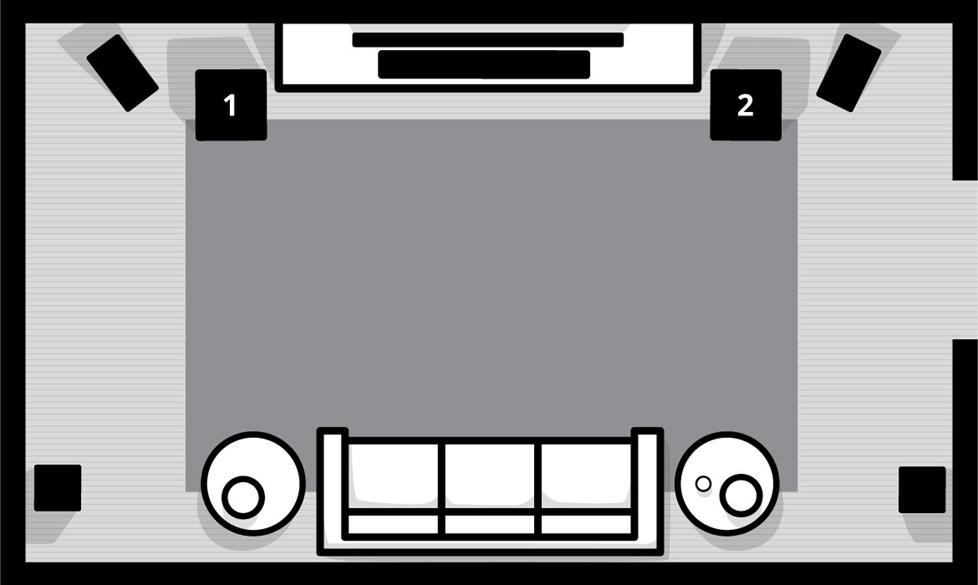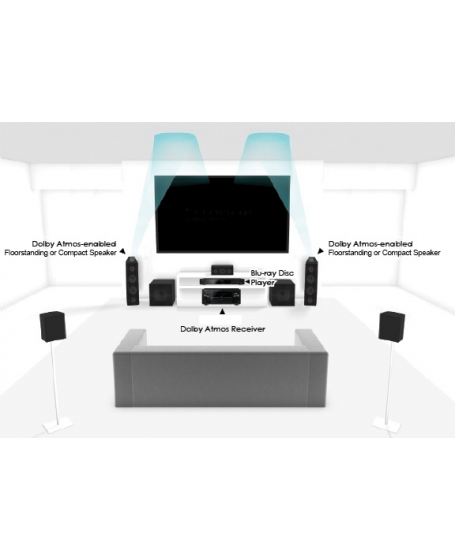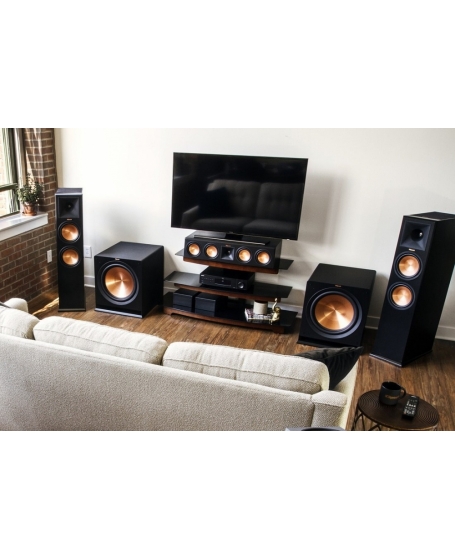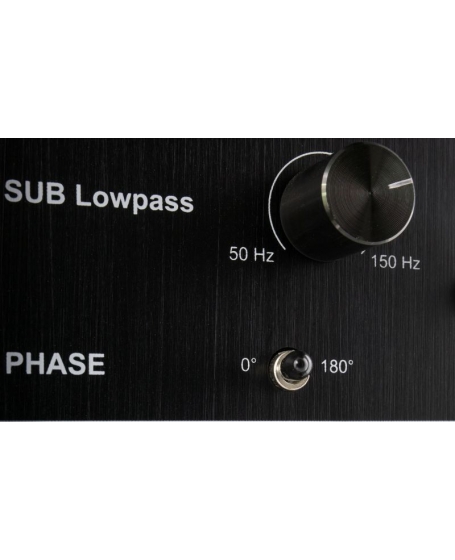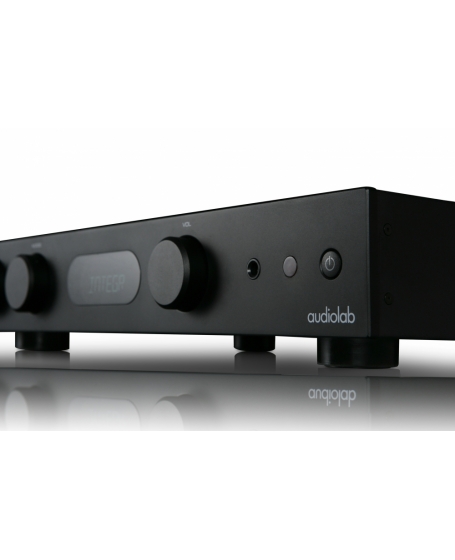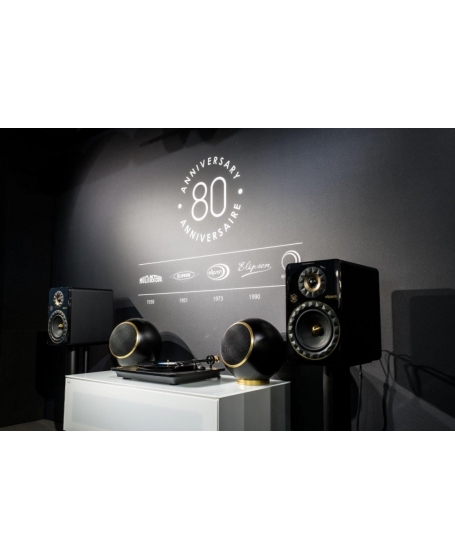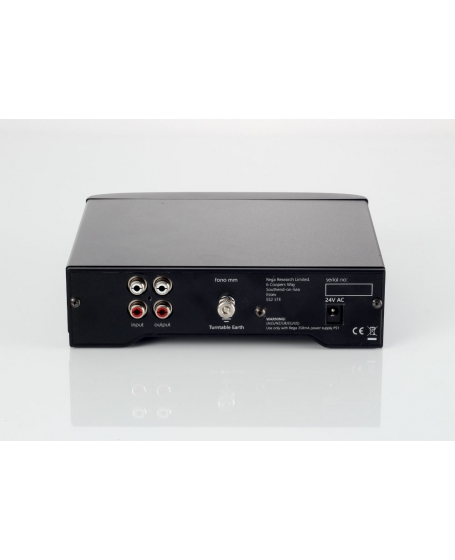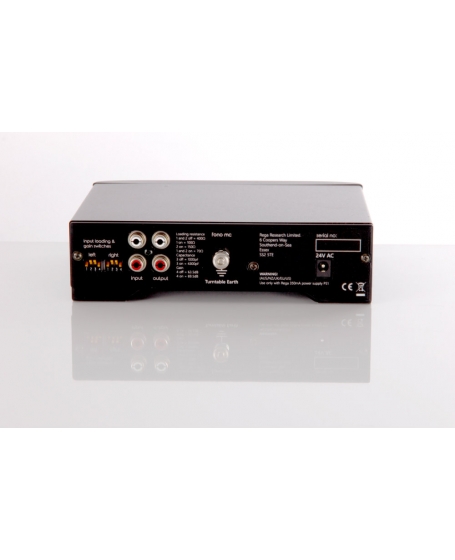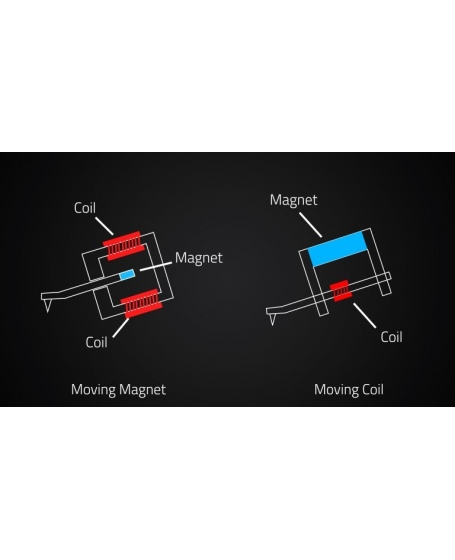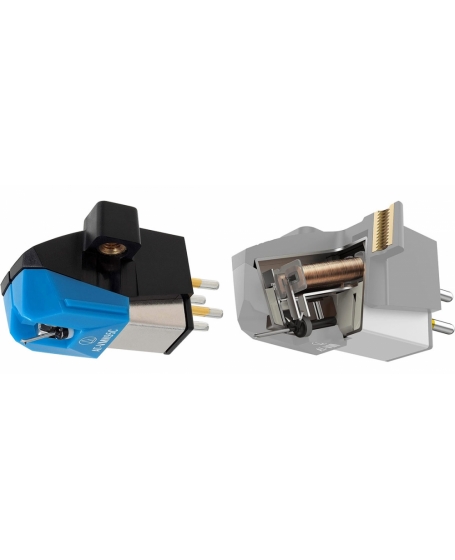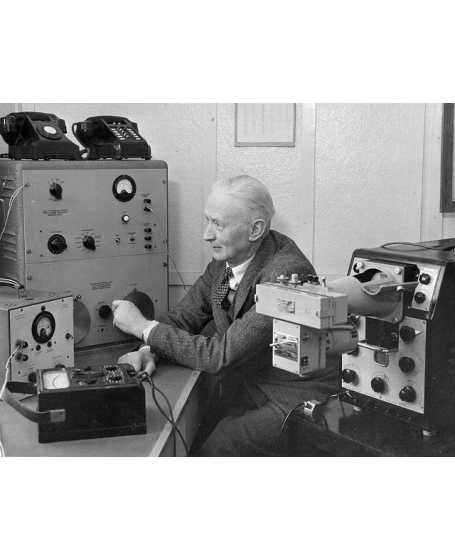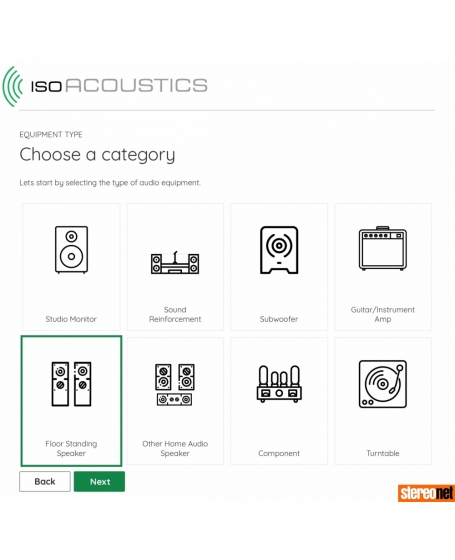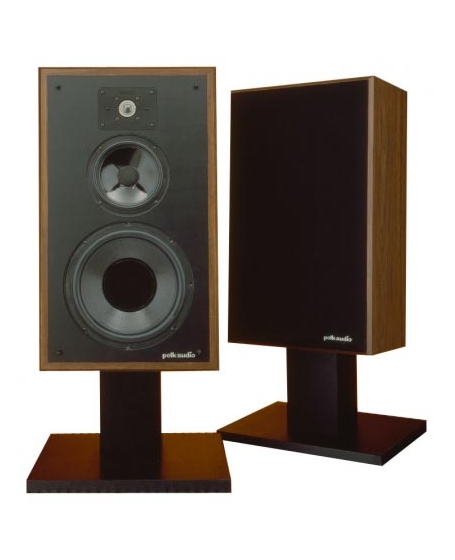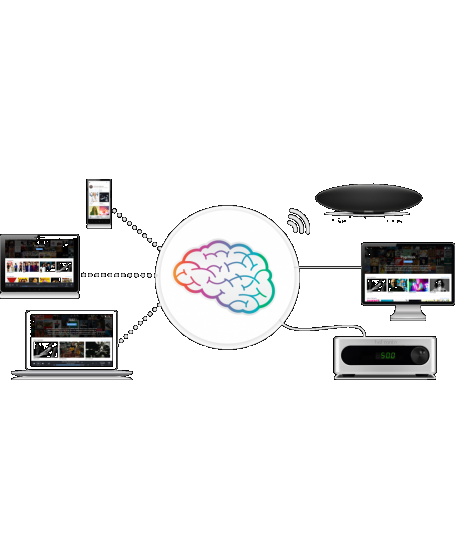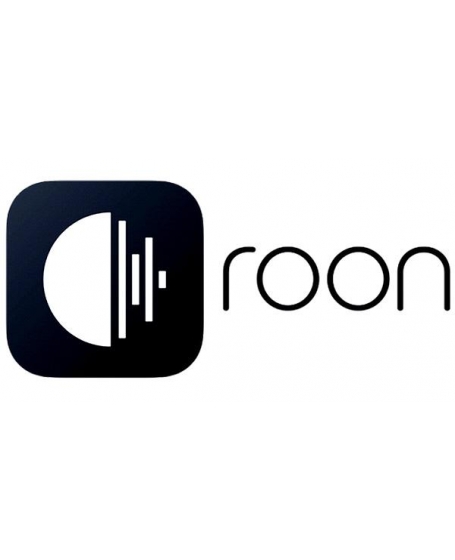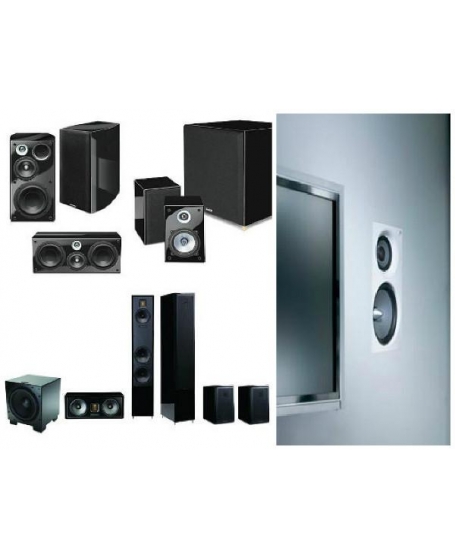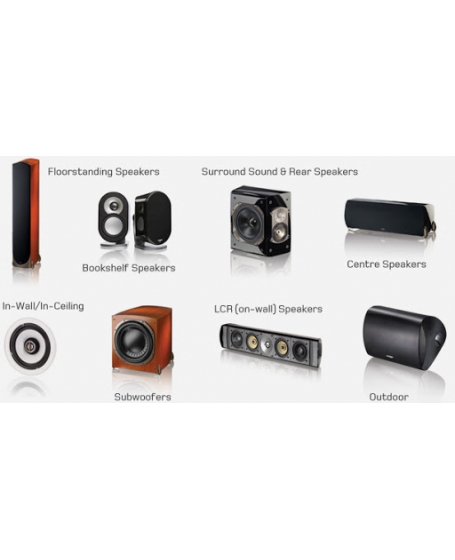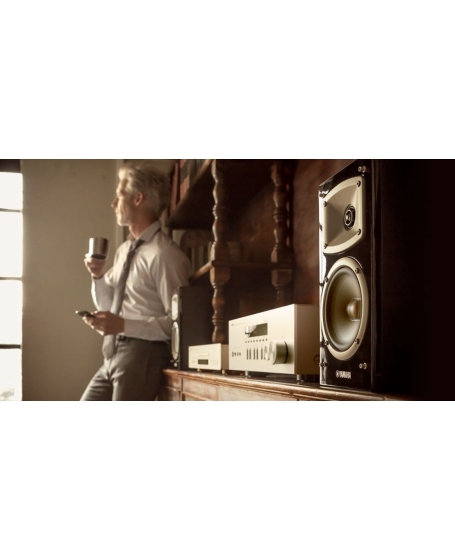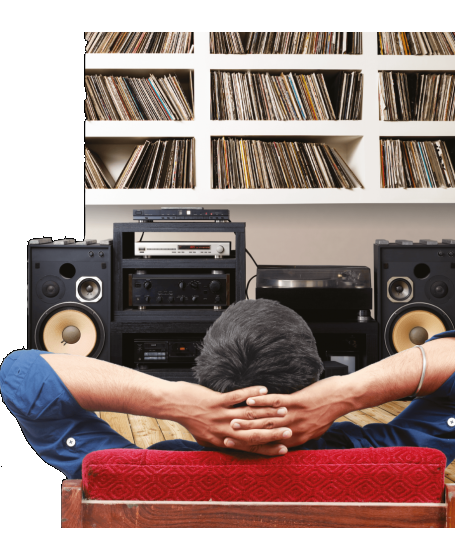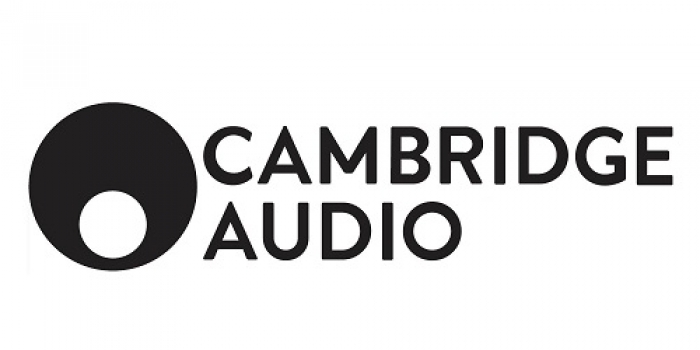Home Theater Subwoofer Setup
SKU: Home theater subwoofer setupTips to help you tune up your bass
Home theater subwoofer setup
Tips to help you tune up your bass

Tight, well-defined and, yes, DEEP bass is a key component of any home theater. A powered subwoofer is a must for bringing those explosions, crashes, and other big-time action to life. Lots of people just put their sub anywhere, connect it to their receiver, and leave it at that. But a few key adjustments can help dial it in. Read on to learn everything you need to know to get the most out of your sub.
Where should I put the sub?
Typically you should try and put the subwoofer near your front speakers. But let’s be honest: most people put their subwoofer wherever they have room. And that’s not necessarily a bad idea.

The low-frequency waves we hear as “bass” are less directional than higher frequencies generated by full-range speakers. That means that even if the subwoofer isn’t close to your TV, your ears will have trouble telling the difference.
Some manufacturers recommend placing your sub in a corner. The walls can help bounce more waves back toward the seating areas. If you’re after very full, exciting bass response, this is a good option.
If you have a few placement options, you’ll want to experiment after your subwoofer is connected. So, on to the connections…
How to connect your subwoofer
All powered subwoofers require two connections: power and signal. For power, you just need a nearby outlet. We highly recommend plugging your sub into a power protection device to guard against surges.
For the signal connection, there are three options. Let’s start with the most common connection.
LFE connection to a home theater receiver
This is the simplest and most common connection. It works for any receiver or amp with a dedicated subwoofer output. Use a subwoofer cableto connect your receiver’s subwoofer output to the LFE (low frequency effect) input on the sub. Many stereo receivers and amps also have subwoofer outputs for these connections.

Crossover — the "traffic cop" of your system
You want to make sure low frequencies are sent to your sub. This allows your front, center, and surround speakers to play only the frequencies they can handle to help prevent distortion. The crossover lets you determine which frequencies go to which speakers.
You’ll find crossover settings on both your sub and in your receiver. We typically recommend using the one on the receiver. But before you dive into your receiver's menu system, follow these other steps first. They may take care of everything for you.
1. Auto-calibration
Your receiver may include a calibration microphone to optimize the performance of your speakers. Usually, these room correction systems do a very good job of adapting the sound to your surroundings.
But what if your receiver doesn’t have auto calibration? Or you’ve tried it and still aren't impressed with the bass? You can make some manual adjustments.
2. Setting the speaker size
Go into your receiver’s settings menu and find the speaker setup. There will be a size setting for your front left and right speakers. This actually has less to do with the physical size of your speaker. It's more about bass management.
Set the speakers to “small,” even if you’re using floor-standing speakers. That’s because the “small” setting will send the low frequencies to the subwoofer. This is good for three reasons:
- It frees up your front speakers to focus on midrange and high frequencies.
- It allows your receiver to devote more power to midrange and high frequencies.
- It can prevent low frequencies from damaging your speakers.
3. Crossover settings
Once you’ve set the speakers to “small” you may not need to fine-tune the crossover. But if you want to dial it in more precisely, you can set the precise crossover point, measured in Hertz. All signals below the crossover point will be sent to the sub. For bookshelf speakers, you’ll want a higher crossover frequency – about 120 Hz . For large tower speakers, try 60 Hz. Most receivers default to somewhere in the middle, usually around 80 Hz.
Finalizing your subwoofer's placement
If you have several options for placement, now you’re ready to pick the ideal location. You’ll want to fire up some music with some good bass. Then sit in your primary seat and listen. Does the bass sound weak? Or maybe too boomy?
Now move to a couple of different spots and listen. You’ll probably notice that the bass can sound very different as you change locations.

If you used auto-calibration to set up your home theater system, remember to rerun it every time you move your sub.
To tailor the bass to your “sweet spot” use the popular method known as “crawling.” Start with the subwoofer at or near your primary listening position. Then move to different spots the sub could go and listen to your chosen sample music, listening carefully to the bass. When you find a spot where the bass sounds just right, that’s where you should put your sub.
Final tweaks
Phase switch — If your sub still feels a little off, your subwoofer may be out of phase with your speakers. Most subs have a two-position phase switch on the back. Toggle it to the other setting and see if you get better bass.
Level control — Most subs have independent volume controls. It’s an easy way to get a little more oomph or dial back a particularly loud soundtrack. You may need to make adjustments from movie to movie.
Put your sub on a platform — If your floor, walls, and ceiling vibrate to the beat of your sub, you get unwanted resonances that color the sound of your bass. To stop the vibrations, place your sub on a sound absorbing platform.

The Auralex SubDude-II isolation platform decouples your subwoofer from the floor, which gives you cleaner, tighter bass.
What if my receiver doesn’t have a sub output or my sub has no LFE input?
Don’t worry – you can still connect your sub using one of the following two options:
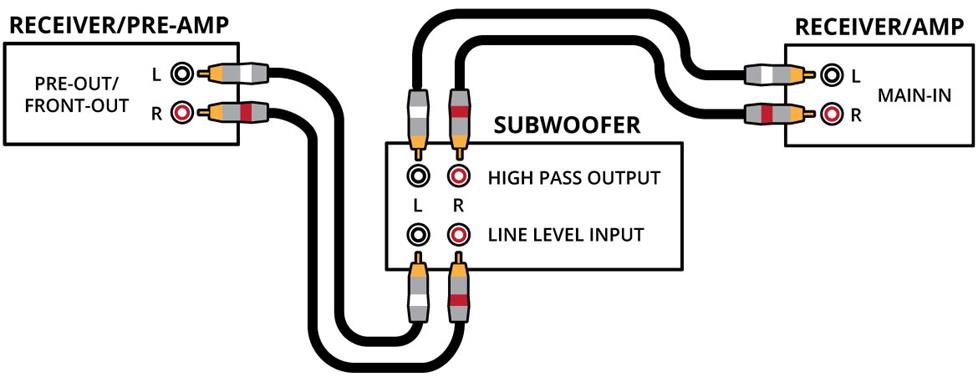
Or you can use speaker wire to connect to your sub's speaker-level inputs:
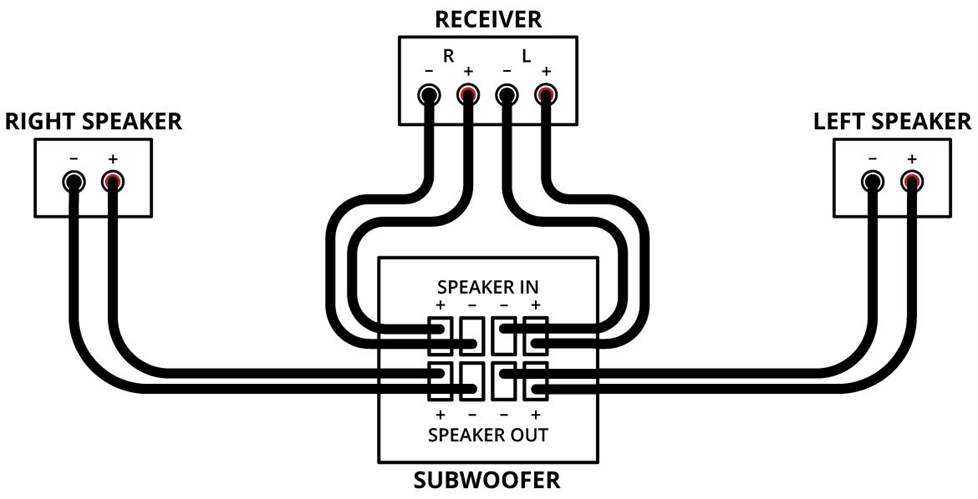
Not enough bass? Try two
If you have a very large room that’s bass challenged, we recommend adding a second subwoofer. It’s the best option for evenly distributing bass response in a large space. Most newer receivers offer a second subwoofer output for connection. Or you can simply use a Y-adapter.
